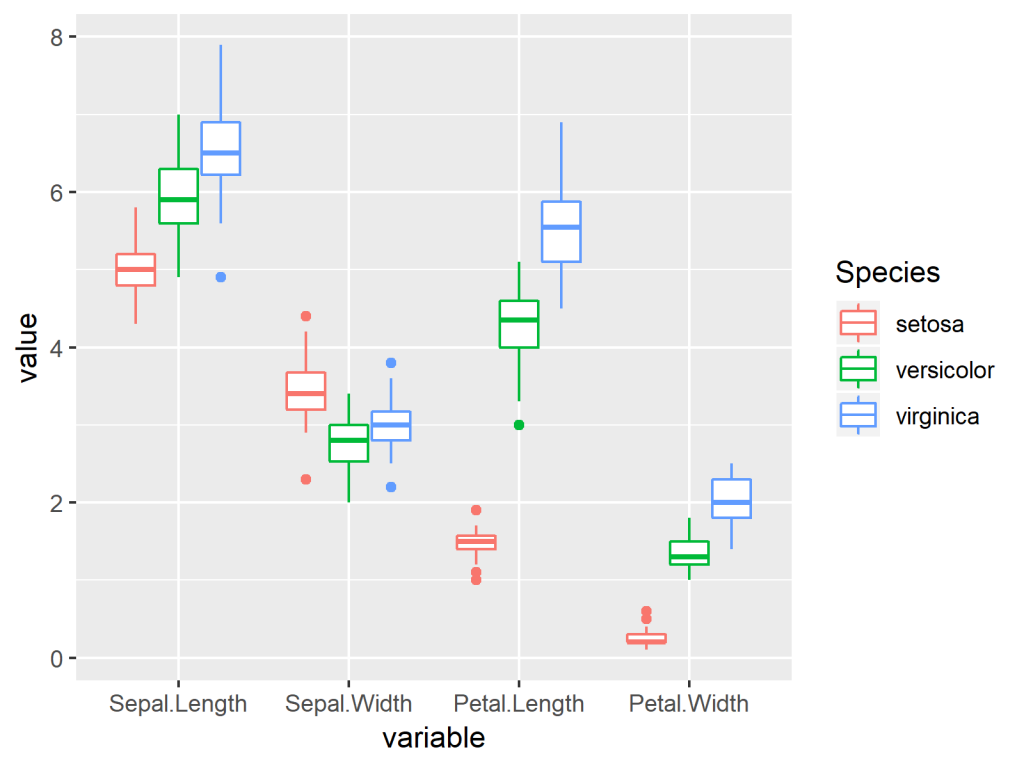

Anything you put in the ggplot() function can be seen by any geom layers that you add (i.e., these are universal plot settings).# Assign plot to a variable surveys_plot <- ggplot( data = surveys_complete, mapping = aes( x = weight, y = hindfoot_length)) # Draw the plot surveys_plot + geom_point() use the ggplot() function and bind the plot to a specific data frame using the data argument.To build a ggplot, we will use the following basic template that can be used for different types of plots: ggplot(data =, mapping = aes()) + () Adding layers in this fashion allows for extensive flexibility and customization of plots.

The + sign used to add layers must be placed at the end of each line containing a layer.You can also specify aesthetics for a given geom independently of the aesthetics defined globally in the ggplot() function.This includes the x- and y-axis you set up in aes(). You may notice that we sometimes reference ‘ggplot2’ and sometimes ‘ggplot’.If, instead, the + sign is added in the line before the other layer, ggplot2 will not add the new layer and will return an error message. To clarify, ‘ggplot2’ is the name of the most recent version of the package. Ggplot( data = surveys_complete, mapping = aes( x = species_id, y = weight)) + geom_boxplot( alpha = 0) + geom_jitter( alpha = 0.3, color = "tomato") The previous version of the ggplot2 package, called ggplot, which also contained the ggplot() function is now unsupported and has been removed from CRAN in order to reduce accidental installations and further confusion.However, any time we call the function itself, it’s just called ‘ggplot’.
#Multiple plots in one graph r code
We can see that both lifeExp and gdpPerCap have increased over the years.Notice how the boxplot layer is behind the jitter layer? What do you need to change in the code to put the boxplot in front of the points such that it’s not hidden? Challengesīoxplots are useful summaries, but hide the shape of the distribution. This definitely help us understand the relationship of the two variables against another. A plot with with different y-axis made with twinx in matplotlib. Then we can display the plot with plt.show() as before.

# make a plot with different y-axis using second axis objectĪx2.plot(gapminder_us.year, gapminder_us,color="blue",marker="o")Īx2.set_ylabel("gdpPercap",color="blue",fontsize=14)įig.savefig('two_different_y_axis_for_single_python_plot_with_twinx.jpg', # twin object for two different y-axis on the sample plot
#Multiple plots in one graph r update
Now we use the second axis object “ax2” to make plot of the second y-axis variable and update their labels. Next we use twinx() function to create the second axis object “ax2”. And we also set the x and y-axis labels by updating the axis object. In this example, we plot year vs lifeExp. We first create figure and axis objects and make a first plot. The way to make a plot with two different y-axis is to use two different axes objects with the help of twinx() function. One of the solutions is to make the plot with two different y-axes. We don’t see any variation in it because of the scale of gdpPercap values. The line for lifeExp over years is flat and really low.

We can immediately see that this is a bad idea. # create figure and axis objects with subplots()Īx.plot(gapminder_us.year, gapminder_us.lifeExp, marker="o")Īx.plot(gapminder_us.year, gapminder_us, marker="o") Naively, let us plot both on the same plot with a single y-axis. lifeExp values are below 100 and gdpPercap values are in thousands. The variable on x-axis is year and on y-axis we are interested in lifeExp & gdpPercap.īoth lifeExp and gdpPercap have different ranges. We are interested in making a plot of how lifeExp & gdpPercap changes over the years. Let us subset gapminder data by using Pandas query() function to filter for rows with United States. #load gapminder data from url as pandas dataframe We will use gapminder data from Carpentries to make the plot with two different y-axis on the same plot.


 0 kommentar(er)
0 kommentar(er)
